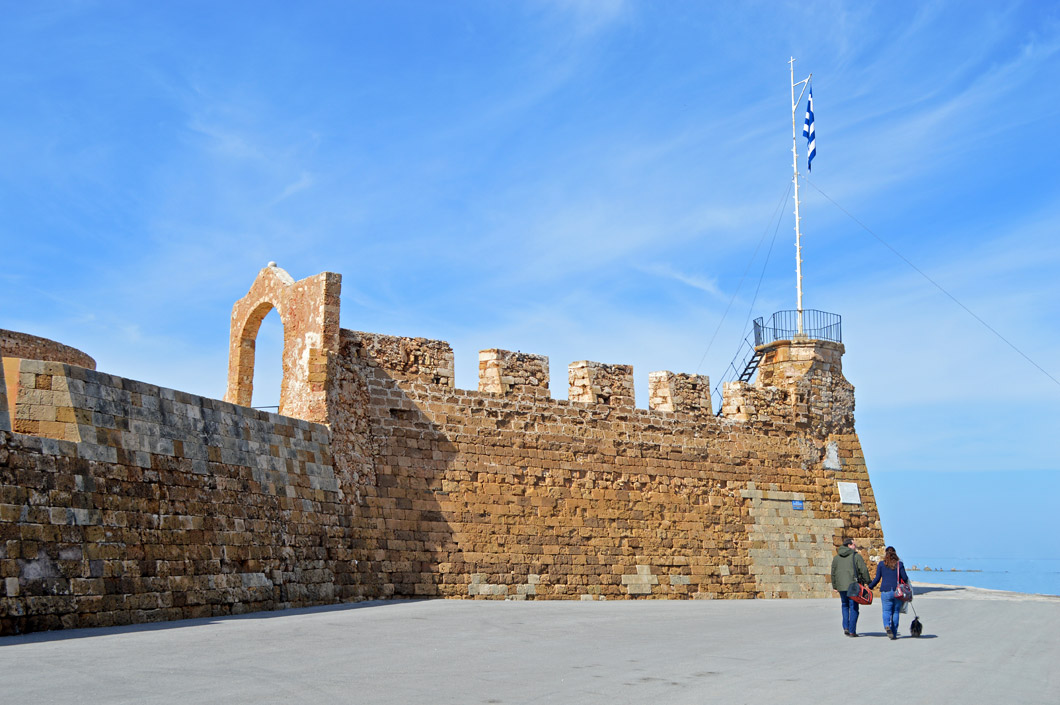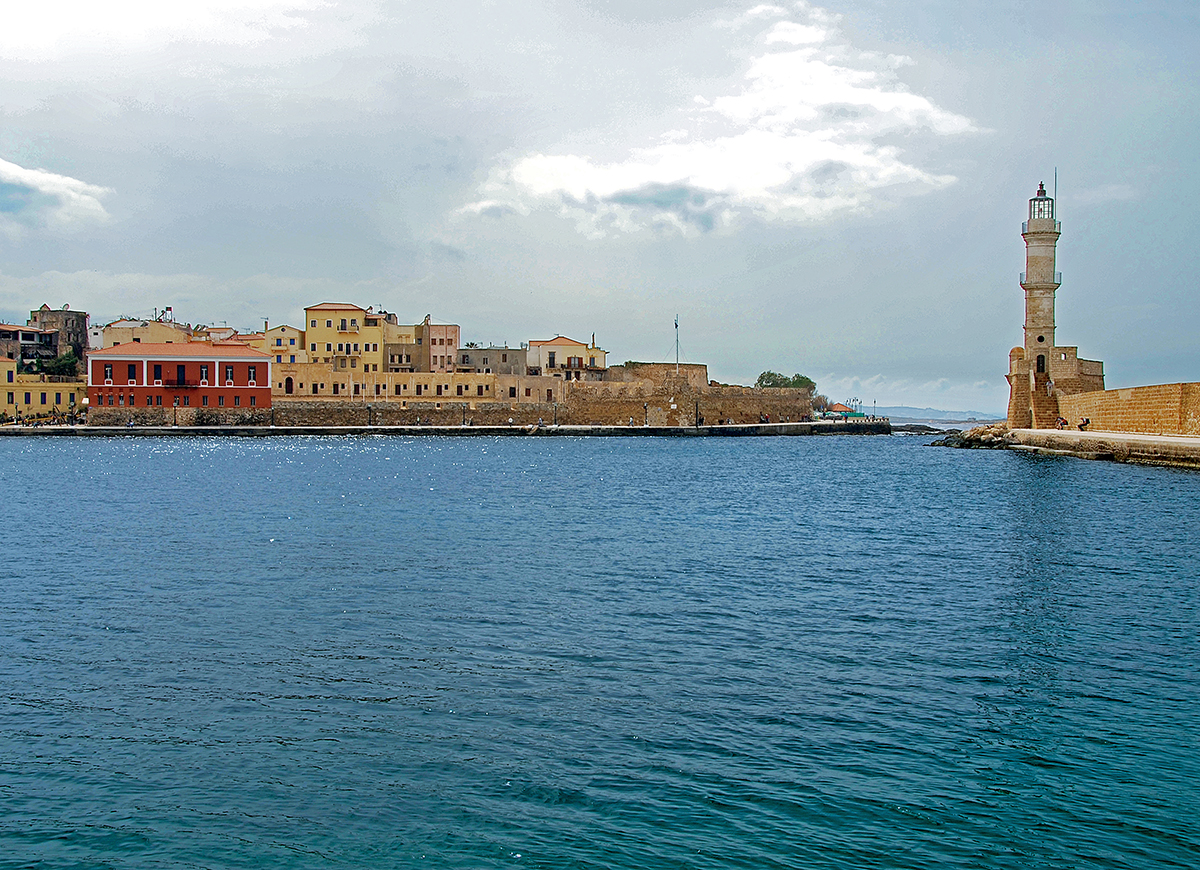The Walls of Chania
The city of Chania was surrounded by walls already in the Byzantine era. The Byzantine fortification had an irregular shape and enclosed the hill of Kasteli. These walls, which were built with stones detached from the ruins of Ancient Kidonia, were repaired in 1252 by the Venetian conquerors, who built a new city within the walls, following a new city plan.

Later on, though, the invention of gunpowder, the evolution of warfare and the ever increasing housing needs brought new changes. Seeing the threat of the Ottoman Empire, which was spreading across the eastern Mediterranean, and realizing the new requirements of the city for living space (it had begun to expand beyond the suffocating walls), the Venetians decided to build new fortifications.
Therefore, they began to construct the new walls and the moat in the mid 16th century, according to the plans of and under the supervision of Michele Sanmicheli from Verona.
The walls formed a square, and had heart-shaped bastions at their corners. There were three gates in the walls. The Porta Sabbionara (Pίli tis àmmou = sand gate) was on the eastern side. The Porta Retimiota (Pίli tou frourίou = fortress gate), which was the main one, was on the south side, and led to the road to Rethymnon. There was also a small gate, located at the San Salvatore bastion, which was mainly used for military reasons, as well as by the residents of the Jewish quarter. All gates would open at sunrise and close at sunset.
Later on, even these walls proved to be limiting the growth of the city; for that reason, during the years of the Cretan State, large sections of them were demolished. Nowadays, small parts of the walls survive around the old town.
The fortress of Firka (where the Naval Museum is housed), the south-western and the north-eastern bastions with the pier, the Venetian shipyards and the lighthouse are also worth seeing. As for the Byzantine walls, parts of them can be seen in the Santrivani square, where a tower with an 18th century addition also survives.
The Firka fortress
For the protection of the port, the Venetians built a fortress that they called Revellino del Porto, at the north-western end of the port, as part of the fortification works of the city. Eventually, the name Firka (which derives from the Turkish word for barracks) prevailed and it is thus called until today.

The fortress’ construction began in the mid 16th century and was completed only a few years before the fall of the city to the Turks (1645).
The headquarters of the Military Commander of the city was located in it, as well as the barracks and military warehouses. At the north side of Firka, there were six adjoining vaults with gunports for cannons (one in each vault), which covered the entire port.
A chain that was fixed at the fortress and ran as far as the lighthouse was used in order to blockade the port in case of an attack.
During the Turkish rule, the fortress was used as a barracks and a prison. On December 1 1913 the Greek flag was hoisted at Firka, as a symbol of the Union of Crete with Greece, in the presence of King Constantine and Eleftherios Venizelos.







